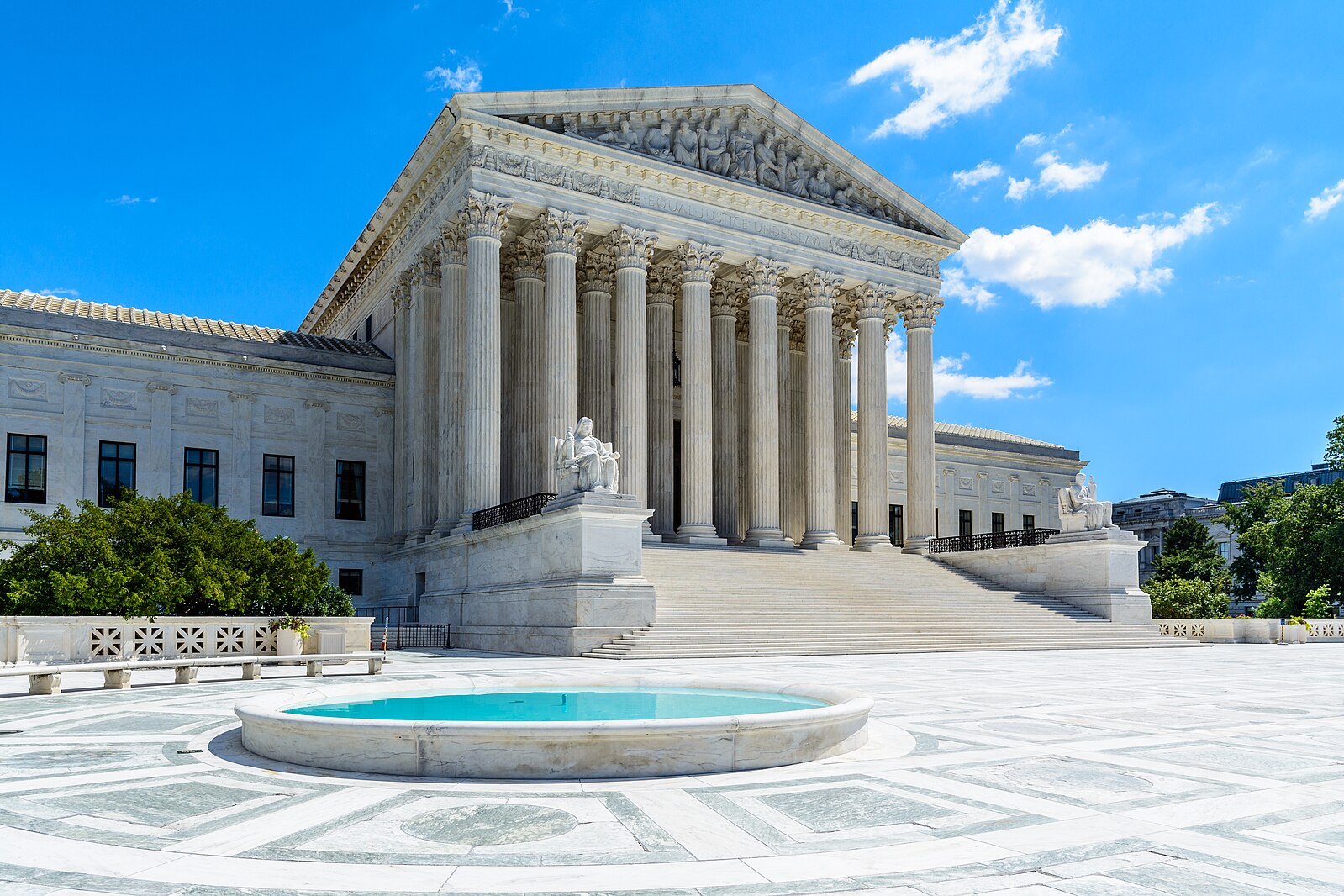U.S. Sanctions Iran after Missile Test, U.S. Escalating Fight in Yemen, and Israel Clears One Settlement But Promises More
U.S.-Iran Tensions Escalate with Tit-for-Tat Missile Tests and Sanctions
Published by The Lawfare Institute
in Cooperation With

U.S.-Iran Tensions Escalate with Tit-for-Tat Missile Tests and Sanctions
Months of combative rhetoric between the Trump administration and Iranian officials crossed over into more substantive confrontation last week. The escalation began when Iran conducted a medium-range ballistic missile test on Sunday, January 30; the missile failed during the re-entry phase, U.S. defense officials said. Iranian officials tried to downplay the provocative move. “We hope that Iran’s defense program is not used by the U.S. administration...as a pretext to create new tensions,” Iranian Foreign Minister Mohammad Javad Zarif said on Tuesday. Nikki Haley, the U.S. ambassador to the United Nations, called for a U.N. Security Council meeting to discuss the test and afterwards said the test was “absolutely unacceptable” and promised that the United States would “act accordingly.”
That U.S. response came on Friday in the form of new sanctions targeting 25 individuals and businesses tied to Iran’s ballistic missile program. Among those sanctioned were several Chinese individuals and companies, leading the Chinese government to file a formal complaint. Then, over the weekend, Iran performed another missile and radar test. An Iranian Foreign Ministry spokesman said the test “was not a message to the new U.S. government.”
So far, the diplomatic sparring has been limited to the long-running dispute over Iran’s ballistic missile development; the Joint Comprehensive Plan of Action (JCPOA) on Iran’s nuclear program remains separate and safe—for now, at least. Iran’s missile program is not part of the JCPOA, but Iran is banned from developing missiles capable of carrying a nuclear warhead under a U.N. Security Council resolution. That hasn’t stopped Iran from conducting tests every few months, to which the United States has responded with punitive sanctions. This was also true under the Obama administration. While the JCPOA was still percolating through the U.S. Congress and Iranian parliament, Iran conducted missile tests in October and November 2015; as soon as the deal was finalized and Iran released four U.S. citizens from prison in January 2016, the Obama administration countered with sanctions tied to those tests. When Iran pressed forward with another missile test in March, the United States issued more sanctions.
This is standard operating procedure by now. The Trump administration, though, could take additional steps -- that’s what National Security Advisor Michael Flynn suggested last week, telling the New York Times, “The ritual of convening a United Nations Security Council in an emergency meeting and issuing a strong statement is not enough. The Trump administration will no longer tolerate Iran’s provocations that threaten our interests.” Iranian officials are not helping the situation by sending mixed messages. In his comments yesterday, Foreign Ministry spokesman Bahram Qasemi said that Iran didn’t need to test Trump’s response because “We know him quite well,” but also said that the administration’s policies are “contradictory” and “unstable.” "We are waiting to see how the U.S. government will act in different international issues to evaluate their approach," Qasemi told press. If Iranian officials do that by continuing to prod an administration already predisposed to escalation with Iran, they might get a more serious escalation than they intended.
U.S. Escalating Role in Yemen on Two Fronts
While debates and recriminations over what went wrong in the January 29 raid on an al-Qaeda in the Arabian Peninsula position continued last week in the press, U.S. forces continued to clash with Al-Qaeda in the Arabian Peninsula (AQAP). Yemeni officials said that U.S. warships bombarded the southern coast in Abyan province for several days, especially areas around the town of Shakra where AQAP had reportedly been preparing an attack. AQAP staged an attack in the town of Lauder on Thursday, then swept through Shakra and Ahwar. A local official told AFP that AQAP fighters remained in Ahwar, but withdrew from the two other towns after residents protested and “made clear...that they were ready to take up arms if necessary” to push the militants out.
While the United States remains engaged in the fight against AQAP in Yemen’s east and south, U.S. defense planners told Foreign Policy last week that they are also looking to step up the U.S. role in Yemen’s civil war. The United States has been providing intelligence and logistical support to the Saudi-led coalition that intervened on behalf of Yemeni President Abdu Rabbu Mansour Hadi for more than a year, but U.S. officials say they’re looking to “become more directly involved.” Last week, a U.S. Navy destroyer was diverted to the Yemeni coast to tighten up the blockade designed to prevent Iranian weapons from reaching Houthi rebels, and the Pentagon is reportedly considering further steps, including drone strikes and embedding U.S. troops with local forces.
Yemen is an unforgiving battlefield; the United States has taken out a succession of senior AQAP leaders since the group was reconstituted in 2009, but this has mostly been an exercise in “mowing the grass” -- the group has thrived as the already-ineffective central government collapsed in recent years. To the west, the well-equipped Saudi-led offensive that began in March 2015 stalled not far north of the internationally-recognized government’s beachhead in Aden; a new push that began in December has made some progress along the country’s western coast, but even after months of fighting, the city of Taiz remains contested and the capital, Sanaa, is hardly discussed. Much of the war has been a grinding stalemate, and many of the deaths have happened far from the frontlines, in Saudi airstrikes that have tallied a devastating civilian toll. And after years of U.S. drone strikes, the population is deeply suspicious of any U.S. role in the country.
Maintaining the fight against AQAP is consistent with U.S. counterterrorism policy, but the reasons for escalating the U.S. role in the war against the Houthis are more questionable. Trump administration officials have suggested it would be a good way to hit back at Iran, but while Iran has backed the Houthis with weapons and training, it's unclear whether Tehran has enough influence to call any shots. After all, the Houthis would be fighting this war with or without Tehran, and they are just one faction in a broader coalition that includes powerful military figures aligned with Ali Abdullah Saleh, the Yemeni president ousted by the Arab Spring.
The Gulf states often complained toward the end of the Obama administration that they needed “reassurance” about the U.S. commitment to protect the Saudi sphere of influence from Iranian incursion. U.S. escalation in the war in Yemen would provide that reassurance, but on Saudi Arabia’s distorted terms. Then again, the Trump administration seems to have a hard time differentiating between Iran and the Houthis, and between the U.S. and Saudi navies. At a press conference last week, Press Secretary Sean Spicer said Iran was “on notice” for (among other things) “actions that it took against our Navy vessel." He seemed to be referring to an incident in which Houthi fighters fired a missile at a Saudi frigate; in some sloppy reporting, officials suggested that the attack could have been intended for a U.S. ship. A CBS reporter corrected Spicer at the time (and Spicer quietly acknowledged the correction), but as Brian Whitaker notes on his site, Al-Bab, the conflation of the Houthis and Iran is “familiar propaganda.”
Israeli Authorities Demolish One Settlement but Promise More
Israeli authorities are dismantling buildings in the Amona settlement this week after clashing with residents during the town’s evacuation. Israeli police had to forcibly remove hundreds of residents of the West Bank settlement who obstructed the roads in the town with barricades and fires and gathered at the synagogue, which they refused to leave. Sixty police were injured and 13 people were arrested. The evacuation was ordered in enforcement of a 2014 ruling by the Israeli Supreme Court, which decided that its construction was illegal under Israeli law because it was built on private Palestinian land.
While the Amona residents took the evacuation hard, it appears to be only a minor setback for the Israeli pro-settler right. The government has continuously upped the ante on settlement expansion in the weeks leading up to the Amona demolition. Last week, the Israeli government approved the construction of another 3,000 homes in settlements in the West Bank, in addition to 3,050 announced in January, 550 of which are slated to be built in East Jerusalem. Prime Minister Benjamin Netanyahu went further last Thursday and promised that he will authorize the construction of an entirely new settlement to replace Amona; though Israel has expanded settlements over the years, no new settlement has been approved since 1992. Then, last night, the Israeli Knesset passsed a new law retroactively granting permits to 4,000 Israeli settlements built on private Palestinian land, as Amona had been. That last move might go too far; it will likely face legal challenges and Israel's attorney general, Avichai Mandelbilt, has said that the new law is unconstitutional and that he will not defend it in court.
The Trump administration, which so far has been very supportive of the Israeli right, sounded an ambivalent note in a statement it released last week. "While we don’t believe the existence of settlements is an impediment to peace, the construction of new settlements or the expansion of existing settlements beyond their current borders may not be helpful in achieving that goal,” the White House said in a statement. It’s unclear what the statement will mean for U.S. policy.


.jpg?sfvrsn=407c2736_6)


